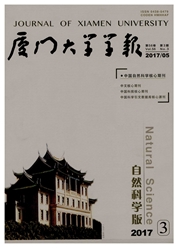

 中文摘要:
中文摘要:
在地理信息系统的支持下,利用地统计学方法,初步分析杭埠河流域土壤全氮和有机质的空间变异特征,并利用Kriging插值法绘制了土壤全氮和有机质的空间分布图.结果表明:研究区域内土壤全氮块金方差与基台值之比C0/(C0+C)在26.47%-27.55%之间,具有中等程度的空间变异,是由结构性因素和人为活动等随机因素共同作用的结果,有效变程为43 km;土壤有机质块金方差与基台值之比C0/(C0+C)在13.15%-33.33%之间变化,具有强的空间相关性,主要是由结构性因素引起的,而人为等随机因素影响较小.土壤全氮和有机质的空间分布相关性明显,相关系数为0.813 6,空间分布格局基本一致,具有西南山区含量较高,东北滨临巢湖的平原区次之,中部丘陵地区和沿河两岸的岗区最低,反映出了地貌变化对研究区域土壤全氮和有机质空间分布的影响.
 英文摘要:
英文摘要:
Studying on the spatial variability of soil N and organic matter is helpful to develop optimal fertilization and management practices to control the non-point sources of N pollution. Geostatistics is useful for characterizing and mapping spatial variability of soil propoties. A geostatistics method,combined with geographic information system (GIS) was applied to the spatial variability of total soil N and organic matter in Hanbu River watershed. The isotropic semivariograms showed the ratio of nugget to sill was 26. 47%-27.55% for total soil N, and 13.15%- 33.33% for organic matter, indicating that the spatial autocorrelation of organic matter exceeds the total soil N in the study area. The autocorrelation range is 43 km for total soil N, 26 km for organic matter,indicating that the spatial heterogeneities were mainly produced by structural factors. The map of total soil N and organic matter interpolated through Block Kriging depicted that total soil N and organic matter contents had the same distributed patterns.
 同期刊论文项目
同期刊论文项目
 同项目期刊论文
同项目期刊论文
 期刊信息
期刊信息
